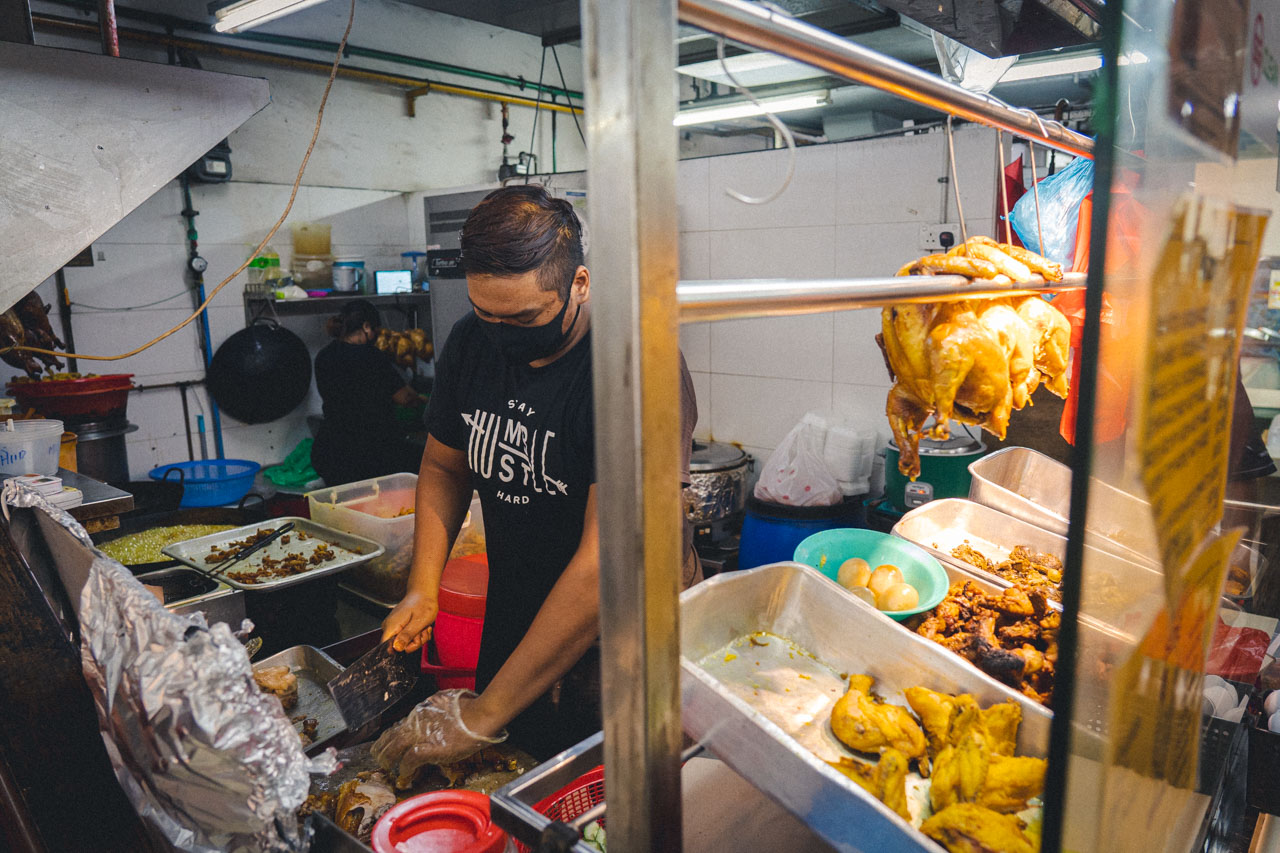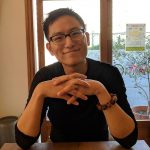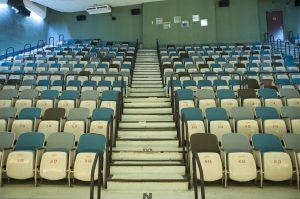For my first non-Zoom interview since the end of the circuit breaker, my Editor sent me out to Yishun on a weekday afternoon. It was Wednesday. A few days before Phase 2 reopening. On the Grab ride over, we crossed a bridge over the Lower Seletar Reservoir. The gray clouds hung low and heavy on the horizon, nearly touching the water’s surface.
Sure enough, by the time we reached Yishun, it was pouring rain.
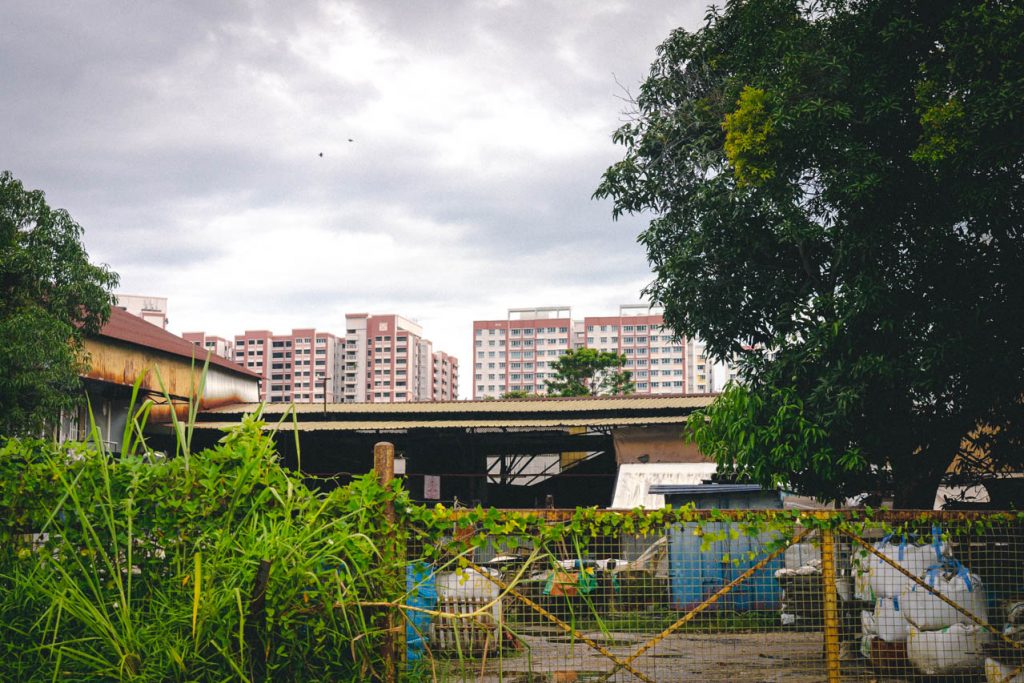
While Yishun may be an inside joke to Singaporeans, to me, an outsider who just moved to Singapore four months ago, it’s a blank slate. Virgin territory that’s still untainted by cat killers and the mythologized exploits of Yishun man.
So you can imagine my excitement when the Grab driver dropped me off in the parking lot of Northpoint Bizhub, a half hour before my scheduled appointment. I walked through the loading bays, past a tuition centre and an oddly placed interior design shop, on my way to the Kim San Leng canteen.
Aside from the hawker stall owners and a few Kim San Leng staff, I was the only customer there. Most of the yellow plastic chairs were still stacked up in a corner, as were the round plastic tables marked with social distancing red tape. Against another wall, there was a row of red and white plastic bags filled with meals being prepared for delivery.
So this was a Yishun coffee shop, I thought to myself.
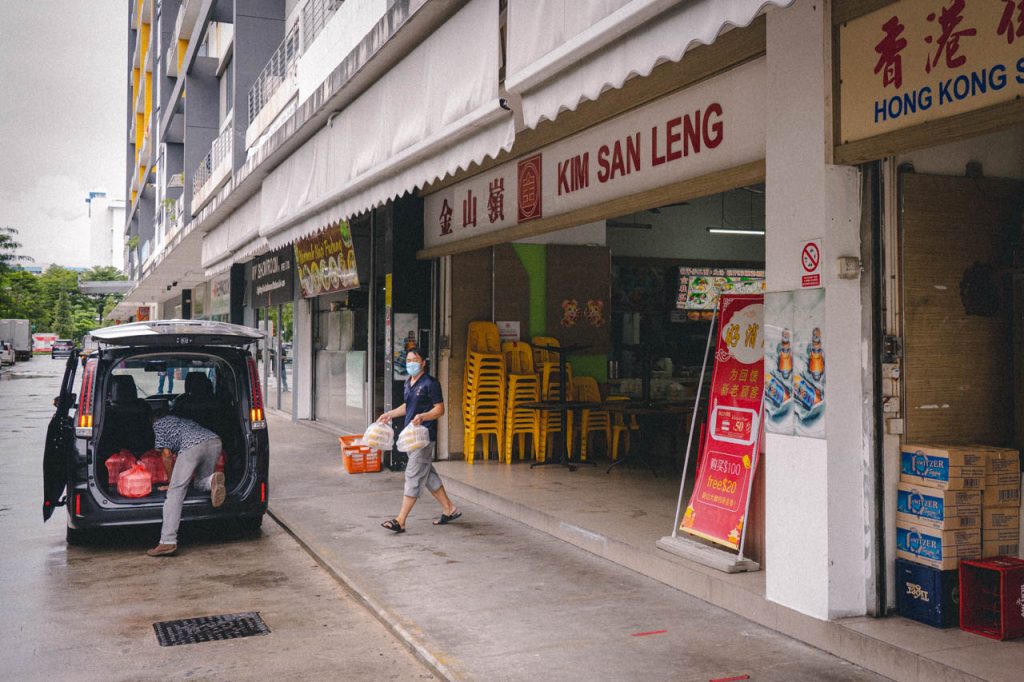
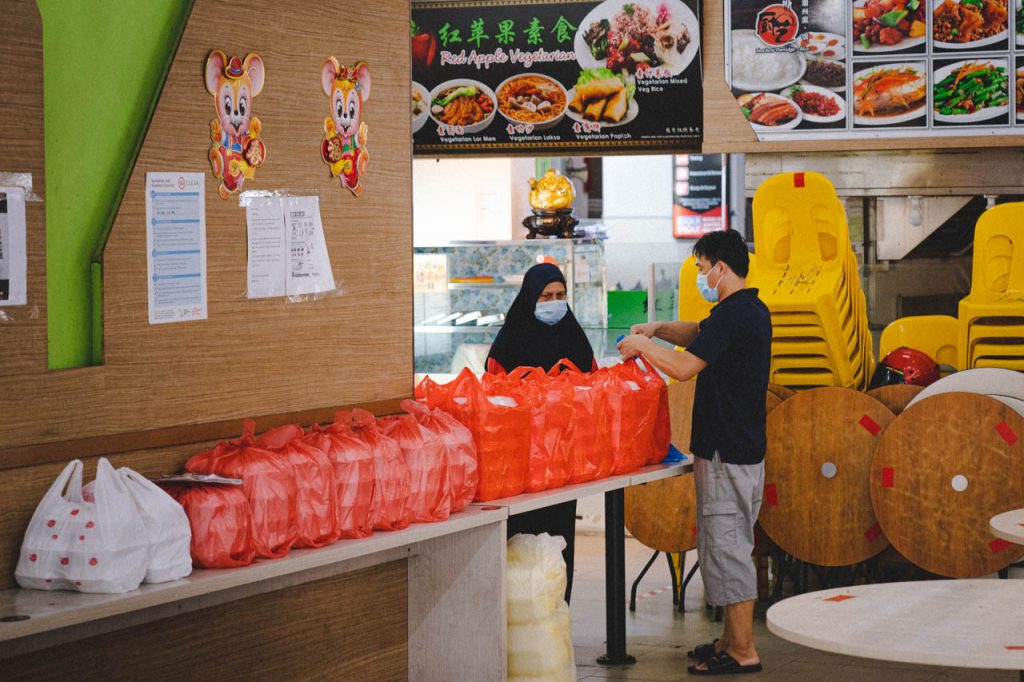
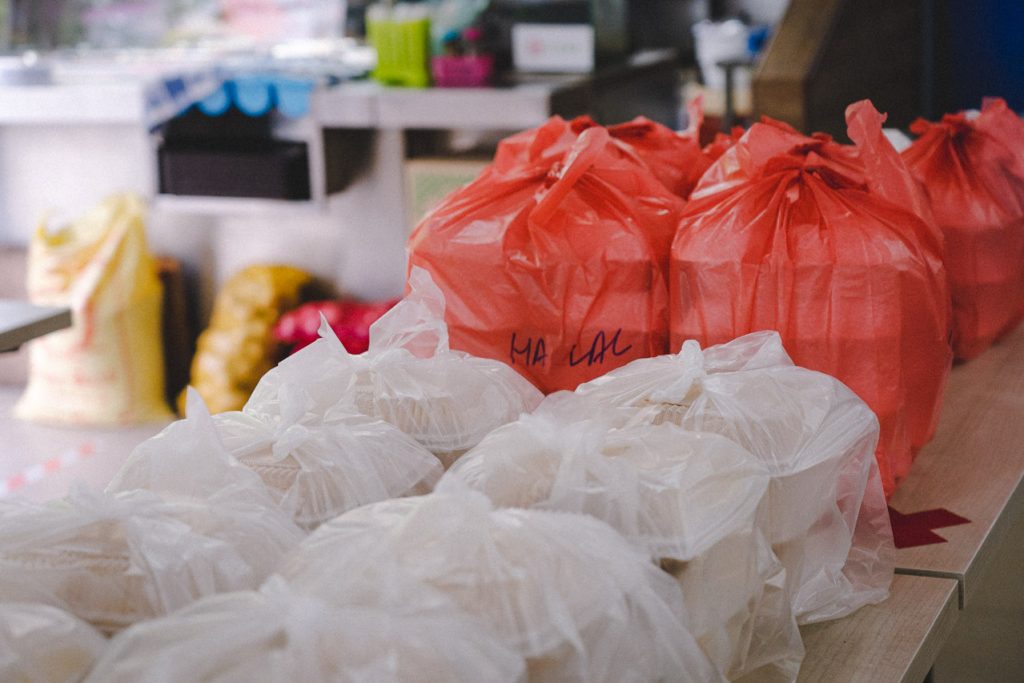
The Kim San Leng Hawkers
If I’ve learned one thing about Singaporeans, it’s that they like to complain. One would assume that this makes them less productive workers, but in fact, the opposite is true. Complaining is the national stress relief that propels Singaporeans to even greater heights of productivity.
Consider hawker stall owners. They are world class multi-taskers. Chop chicken and complain. Make kimchi and complain. Scrub pots and complain. All while keeping their orders fulfilled and customers fed.
The trick, I’ve learned, to interviewing hawkers is to ask triggering questions, sit back, and wait for the fireworks. Questions like: How is your business doing during the CB? What do you think about the timing of Phase 2? Any opinions on Grab, online dabao systems and cashless payments?
In their downtime, the hawker will expound, in passionate and sometimes conspiratorial tones, on the way things truly are:
(on Business) “Of course business is bad leh! What do you expect? Our boss here is OK. Treats us fairly (in reference to Andy, Kim San Leng’s CEO). At other companies, hawkers are not getting the rental relief they need to survive.”
(on Phase 2) “Let me tell you, for sure there’s going to be a second wave! This Phase 2 is not for health reasons, it’s economic and political reasons only.’
(on Technology) “Cashless payment? Too difficult! When I have trouble, who come and fix for me? Cash is faster. No need to wait two days to see the money (in reference to NETS).”

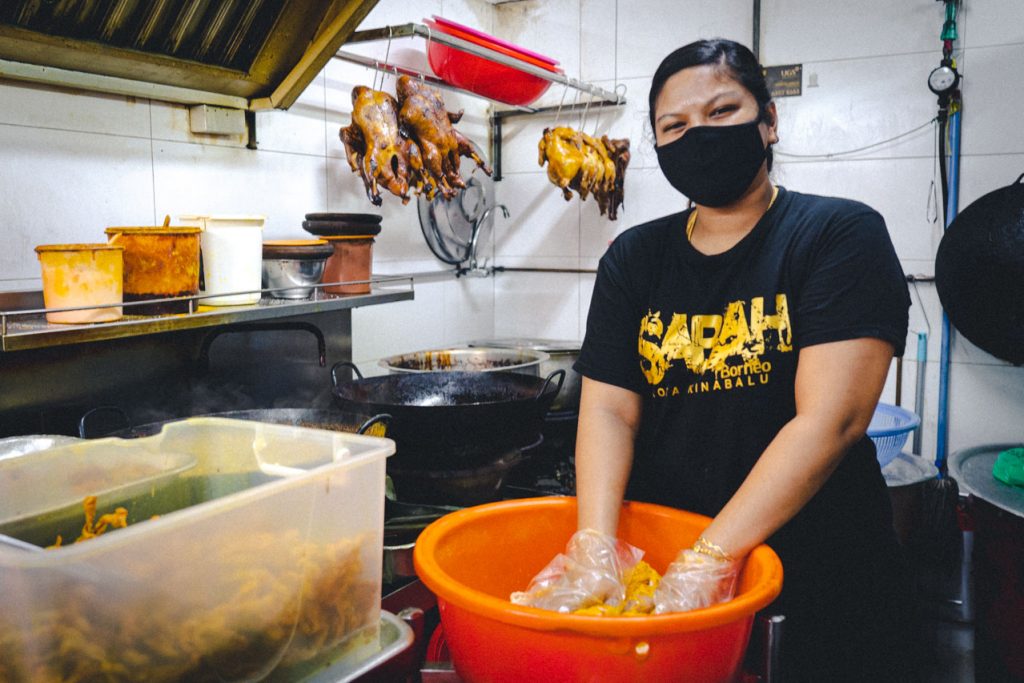

Meals Aren’t Just About Survival, It’s Also About Delivering Comfort
That day, the hawkers at Yishun had just finished preparing meals for the Food Bank and DBS’s Feed the City Initiative. It’s a partnership between F&B owners like Kim San Leng and community NGOs to distribute over 200,000 meals to vulnerable families across Singapore.
Zach, the RICE photographer, and I, decided to ride along with Thana, a private contract driver hired by Kim San Leng to make deliveries. On the menu that day was Korean BBQ, a Halal chicken rice bento and a vegetarian option. 250 boxes in total.
Over the past 4-6 weeks, Kim San Leng has delivered over 10,000 meals to communities across Singapore. Normally, the CEO Andy and his family would help pack, load and deliver the boxes personally.
“The two brothers, Andy and Alfred are very hands on,” remarked Thana. “Whenever we deliver to a new place, they are always there on the ground, talking to people.”
On the drive over, Thana shared with us his struggles working as a Grab driver during the circuit breaker, a job that includes picking up hospital workers after their late night shifts. On longer commutes, his passengers would fall asleep almost instantly after getting into the car. Thana would wake them up when they reached their destination.
“Here we are,” said Thana as we parked in front of an HDB complex in Buangkok.
We had arrived at our first drop-off point.
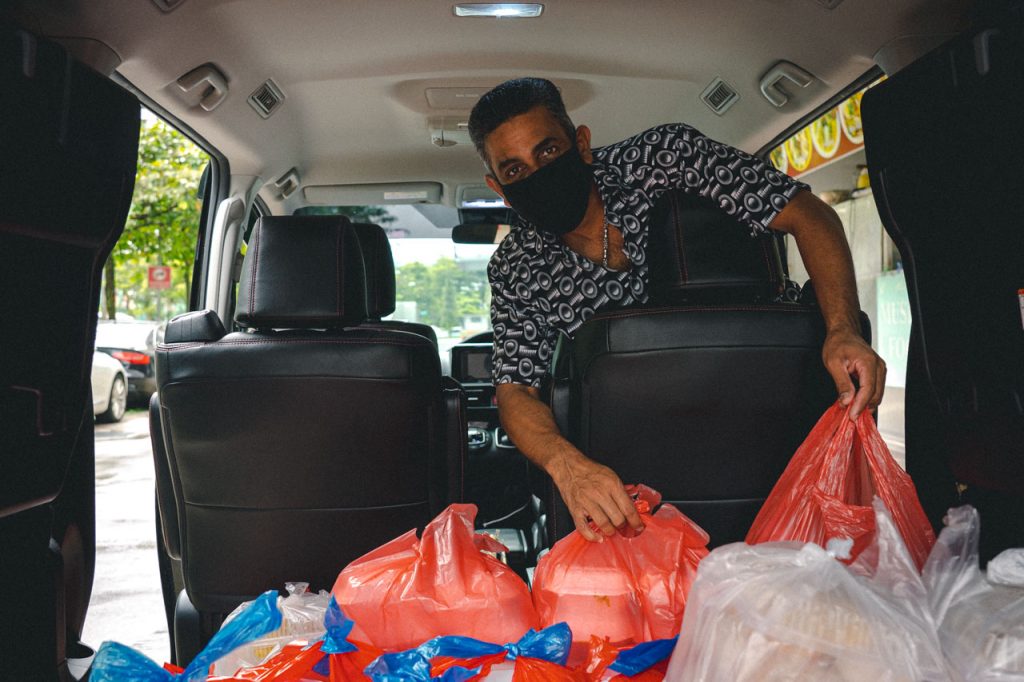

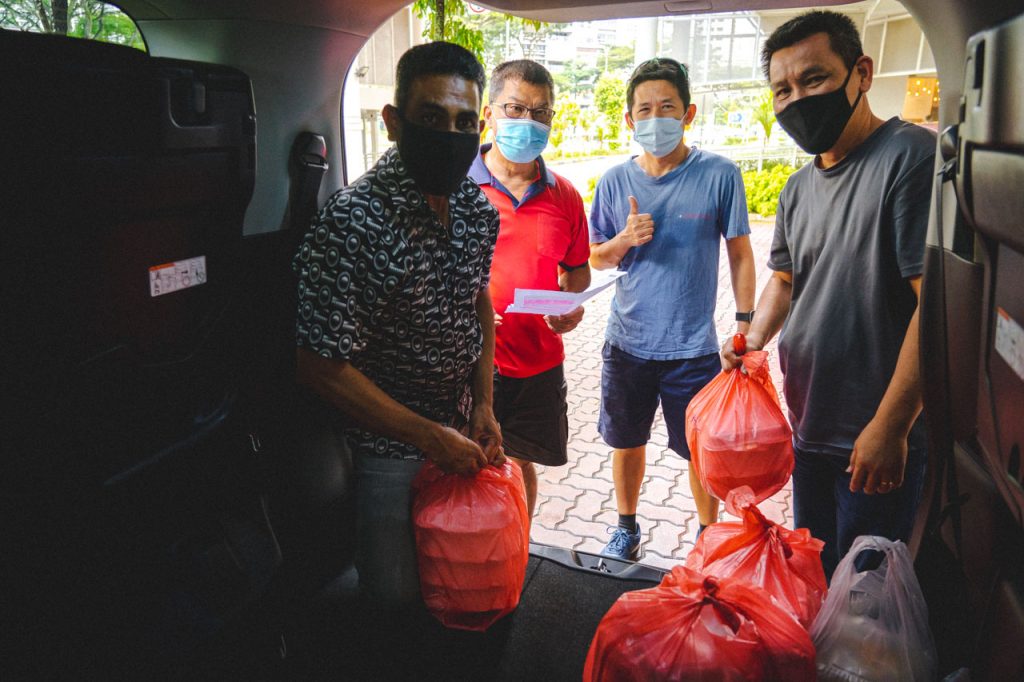
NGOs In HDB Flats
New Hope Community Services is a volunteer organisation that is literally embedded within the community they serve. Their offices are located on the 13th floor of a HDB flat in Buangkok.
The floor comes with an office space and a built-in examination / counseling room.
“I’ve never seen that before,” said Zach, as he snapped photos.
We followed Thana as he handed over the meals to the New Hope volunteer. On the lift back down, Thana received a call.
“The girls from the Food Bank are waiting for you at the next location,” he told me after hanging up. “Let’s go.”


The Food Bank Girls and Vending Machines for the Needy
Margarita and her colleague Jessie met us at the second drop-off location at Ang Mo Kio. As coordinators for the Food Bank, their job is to serve as the liaison between F&B owners and the NGOs in their network.
During the circuit breaker, they’ve made a shift from distributing non-perishable foods to cooked meals in response to an alarming spike in demand.
“People are losing their jobs,” said Margarita. “Some are working fewer hours. We’ve been seeing this trend in our database. Across Singapore, the demand for cooked meals has been rising steadily.”
Sometimes, this demand can pop up in places Singaporeans least expect. Like private condo flats.
“People have certain ideas of what a ‘needy’ family looks like,” said Margarita. “But you often can’t judge on the surface.”
What happens when both parents lose their jobs suddenly? Would living in a condo flat disqualify their children for aid?
It is the job of the Food Bank to carefully vet all profiles and backgrounds through questionnaires, surveys, and data, working closely with local NGOs who understand their communities best.
By compiling city-wide data on the food needs of vulnerable families and communities, the Food Bank hopes to set up 20 food-on-demand vending machines across Singapore by the end of the year, as a way to ensure food security, while eliminating food waste.
A pilot project of 3 machines has already been rolled out in neighborhoods like Toa Payoh.
For this to work, training for the elderly is critical.
“The cards we issued had to be simple to use. Basically, you just scan your card and select your item on the vending machine. Still, extensive training will need to be done at community centres to ensure the elderly get used to it,” said Margarita.
The digital future is coming, even for charities like the Food Bank.


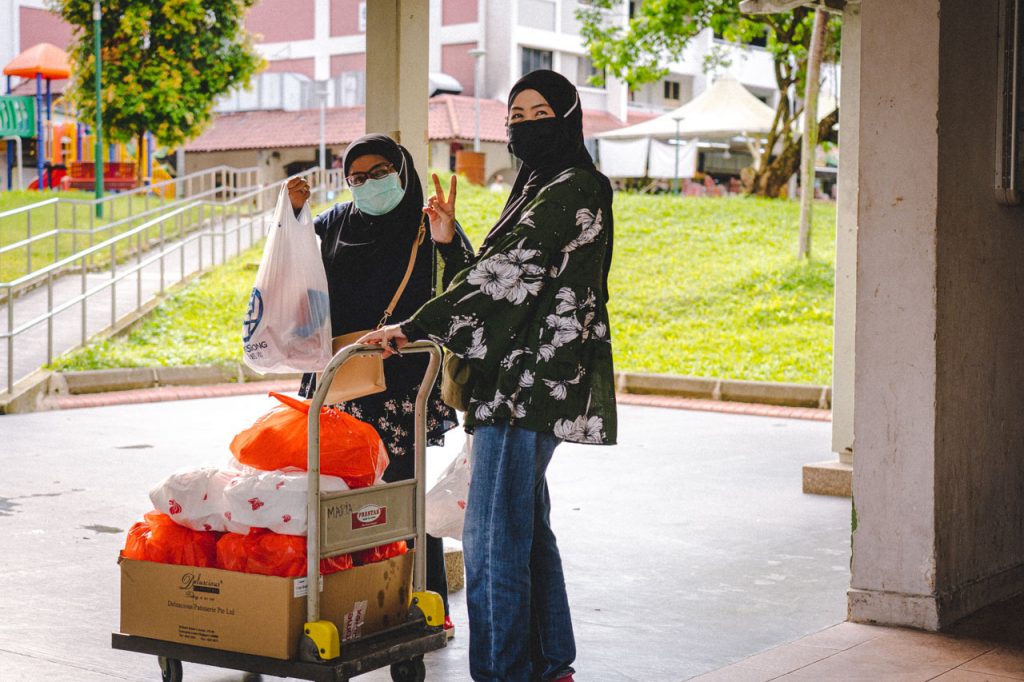
Bridging the Generation Gap With Technology
I purposefully saved my interview with Andy, Kim San Leng’s CEO for last.
You can learn a lot about a CEO not by what he has to say for himself, but by listening to what people say about him—especially from those who don’t receive their paychecks directly from him.
From hawker stall owners, delivery drivers, to the various NGO beneficiaries that work with the Food Bank, everyone had positive things to say about Andy and his family. Even before this crisis, the Hoon family had been a constant and active presence in the communities they serve.
But praise is one thing. Respect is another. The latter has to be earned over many years, and sometimes can only be tested during the most difficult times.
Andy is in his early forties, a third generation CEO of Kim San Leng, taking the reins from their father, who has ‘retired,’ if not in presence, but at least in name. The ‘CEO emeritus’ still retains a dominant voice in the running of the business.
And in the eyes of the old-timers who’ve run KSL’s hawker stalls for decades, Andy and his brother Alfred are still just the “boss’s sons.” Their past attempts to digitise Kim San Leng have sometimes fallen on deaf ears. For example, reception was muted when Kim San Leng set up the coffee shop industry’s first online dabao ordering system, making the hawker selections of its various locations available island-wide.
But the attitude quickly changed after the pandemic. During the circuit breaker, nobody complained when they realised that the online dabao system was working for them.
The hawkers also started noticing that the ‘boss’s sons’ were actively trying to help them through hard times. Kim San Leng took no cut from the Feed the City initiative, and diverted all the proceeds directly to the hawkers and the delivery drivers.
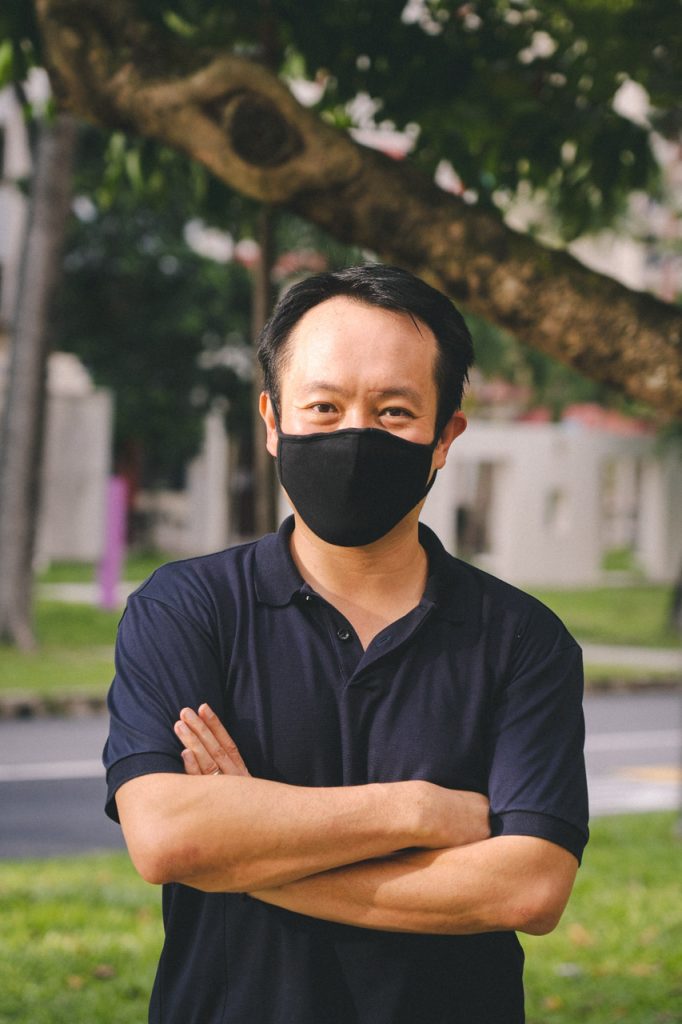
Unbeknownst to them, Andy was also analysing the delivery data behind the scenes, actively promoting the stalls with the fewest number of orders on Kim San Leng’s social media pages.
“In order for Kim San Leng to become a household name, I want all of my hawkers to do well, not just the superstar stalls,” explained Andy.
In the future, he wanted Singaporean families to say, ‘let’s go to Kim San Leng’ and not ‘let’s go to Famous Chicken Rice Stall X.’
The brand itself should be synonymous with quality, both in person as a communal experience and online as a dabao option offering a wide selection of favourites.
“The most important thing I’ve learned through this pandemic is the value of trust, respect, and relationships,” said Andy. “Most importantly, my generation needs to be humble to the hawkers. They are my business.”
The future that Andy envisions won’t come easy. But during this pandemic, he’s seeing a silver lining in the clouds.
“My brother and I have made more progress in the past two months with the old hawkers and my father than we have over the past four years!” laughed Andy.
Sixty-plus-year-old hawker uncles have begun approaching the brothers with questions about online dabao systems and cashless payments. His father has also taken a backseat, trusting Andy and his brother to handle the crisis.
All of this was inconceivable before Covid-19.
Perhaps we’ve all been too quick to write off traditional coffee shops like Kim San Leng as a sunset industry.
Who knows? There might just be some daylight left.
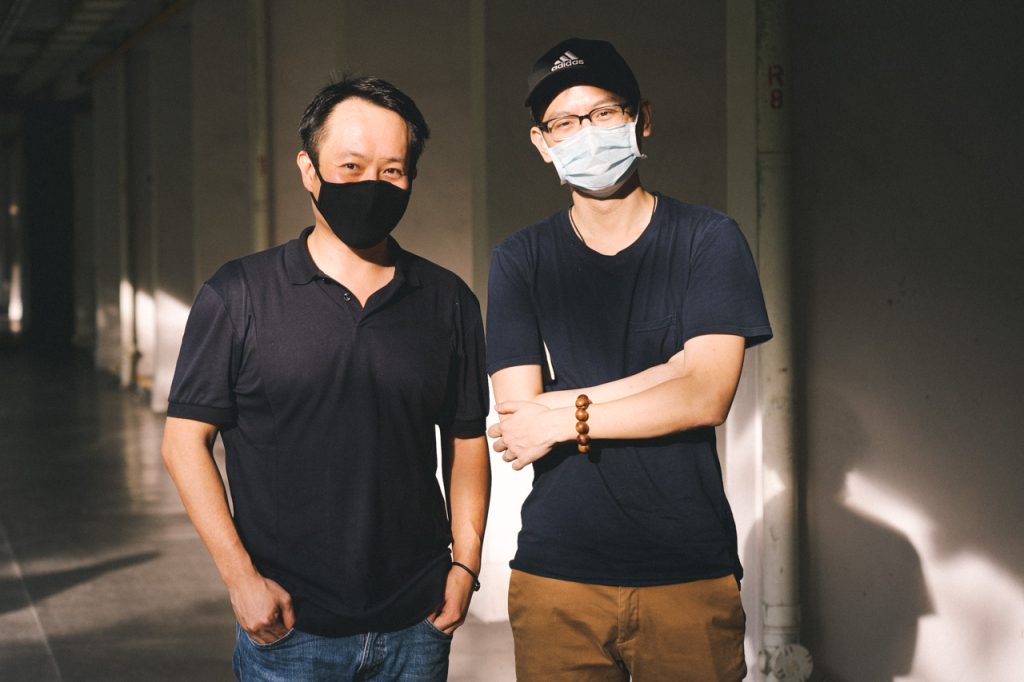
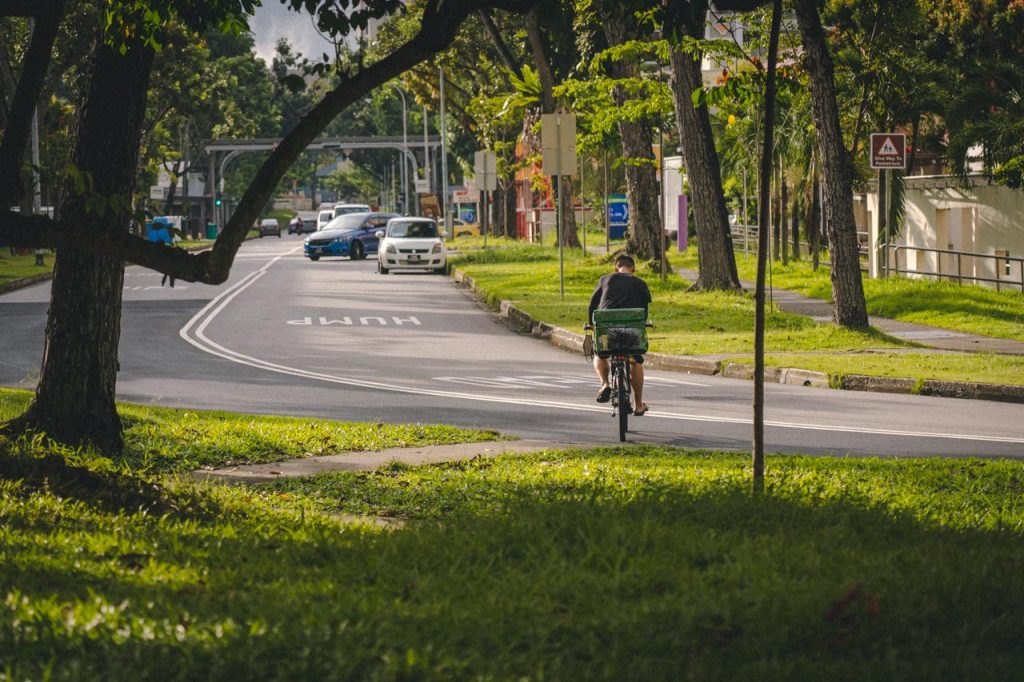
This story was brought to you by Kim San Leng.
Kim San Leng is one of the oldest coffee shop chains in Singapore, having been in business since the 1950s. Today, they have over 30 outlets islandwide, and have launched an in-house delivery service where you can get delicious local delicacies delivered to your doorstep.

